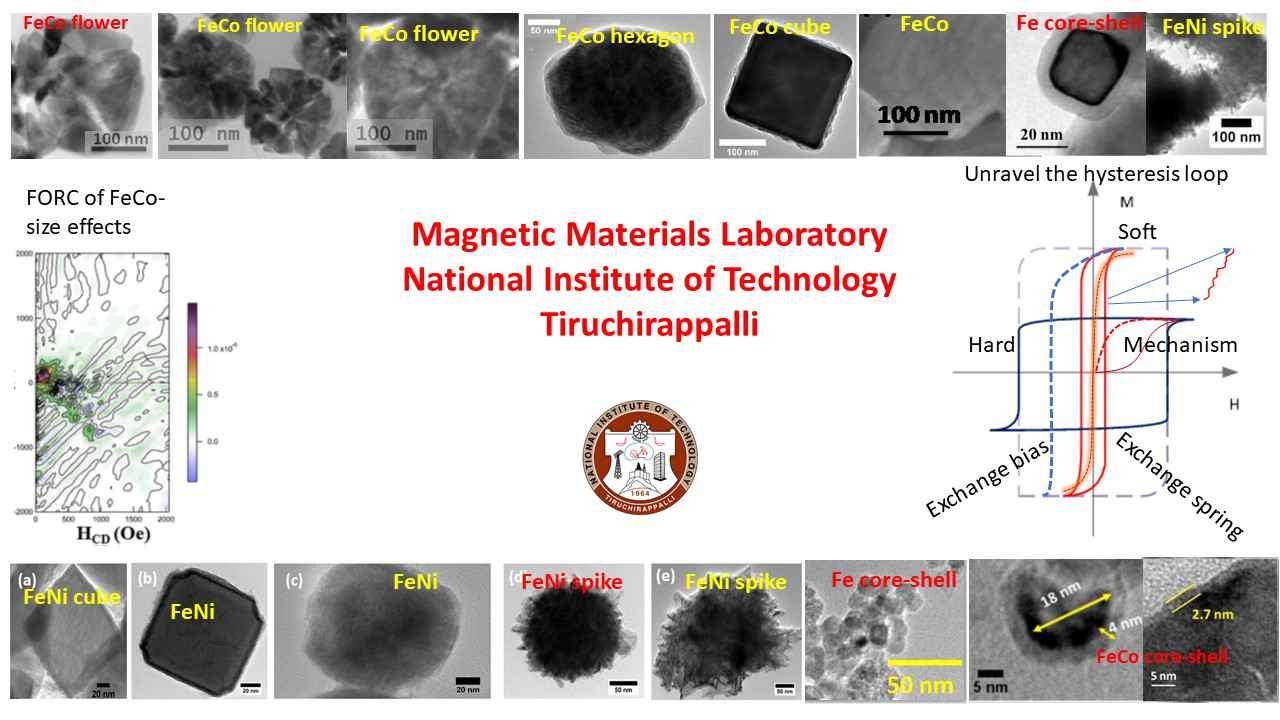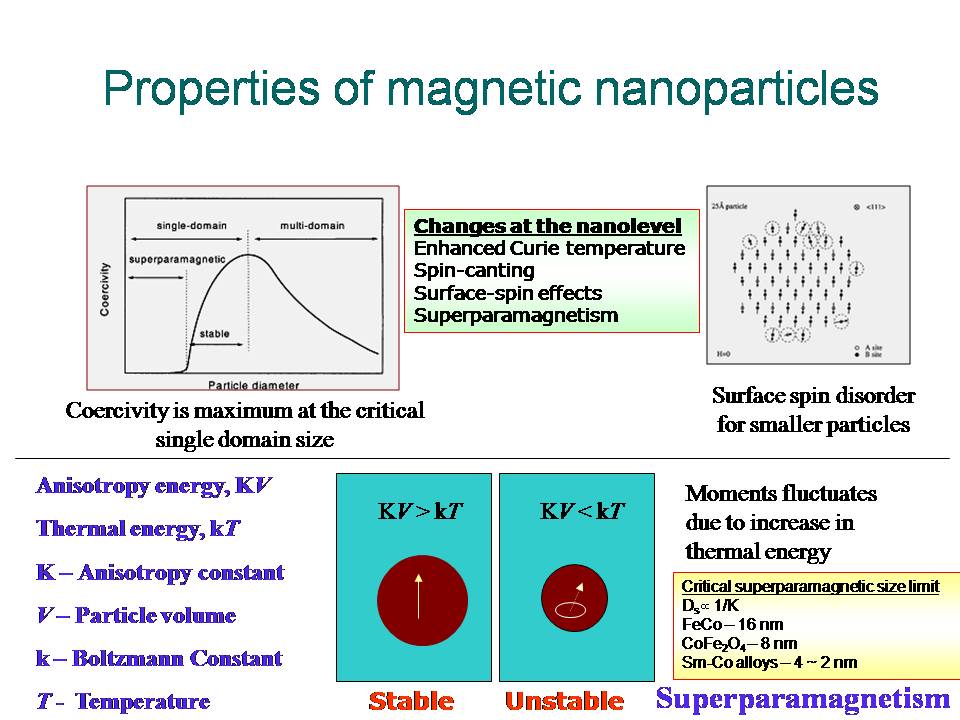Research Interest
Magnetic nanoparticles with controlled size, size distribution and shape are demanded for biomedical applications such as MRI contrast agents, drug delivery and hyperthermia. Nanoparticles synthesized through chemical methods have an advantage in the control of the size and monodispersity of the particles. Varieties of chemical methods are available to synthesize oxides, metals and alloys. Aqueous methods are commonly used to synthesize oxides and chemical reduction methods such as borohydride and polyol process are used to synthesize metals and alloys. Our research work is focussed on the synthesize and characterization of oxides, metals and alloys for biomedical and engineering applications.
The magnetic properties of the nanoparticles are influenced by their morphology, structure, size and its distribution. A variety of changes in the magnetic properties are encountered by the magnetic nanoparticles such as superparamagnetism, surface spin effects etc. Our aim is to sort out the nanoparticles of specific sizes according to their magnetic behavior and utilize them for appropriate applications.

Nanomagnetism
Group Members

Indigenous low cost application development is our motto. The following facilities can be used by external users provided it leads to meaningful research output in the form of publications.
i) Magnetic nanoparticle hyperthermia setup (500 kHz)
Magnetic nanoparticles generate heat in an ac magnetic field that can be used in the treatment of cancer. Optimized magnetic nanoparticles can generate large temperature increase with time.
ii) Magnetic nanoparticle drug delivery system
Highly magnetic nanoparticles can be used in environmental remediation, drug delivery and detoxification. The setup can be used to study the capture efficiency of magnetic materials and related experiments.
iii) Magnetic biosensor (under development)
Open to project students from B.Tech Electronics and Communication, ICE etc.
iv) Magnetic materials for reusable catalyst
The TG/DTA system can be used along with other characterization facilities.
v) Curie temperature based temperature sensors (patent pending)
vi) Cryogenic NDT (for mechanical engg branch)
Temperature below 10 K is produced by CCR for magnetic materials characterization. The associated components such as compressor require NDT methods for leak diagnosis.
vii) Radio antenna for 21 cm line detection.
The radioantenna, receiver system can be used in radio-astronomy for the 21 cm line detection from galaxies based on the spin flip of the electrons. Electronics and communication specialization required for usage.
viii) Magnetic field-matter interaction in compact stars
Theoretical astrophysics topic that aims to study the effect of nonuniform high magnetic field on atoms.
Those who are wish to use our laboratory facilities can contact me through my personal number or through LinkedIn message (emails not preferred). Motivated UG/PG/PhD scholars with various backgrounds (Chemistry, Biology, Electronics etc) are welcome.


